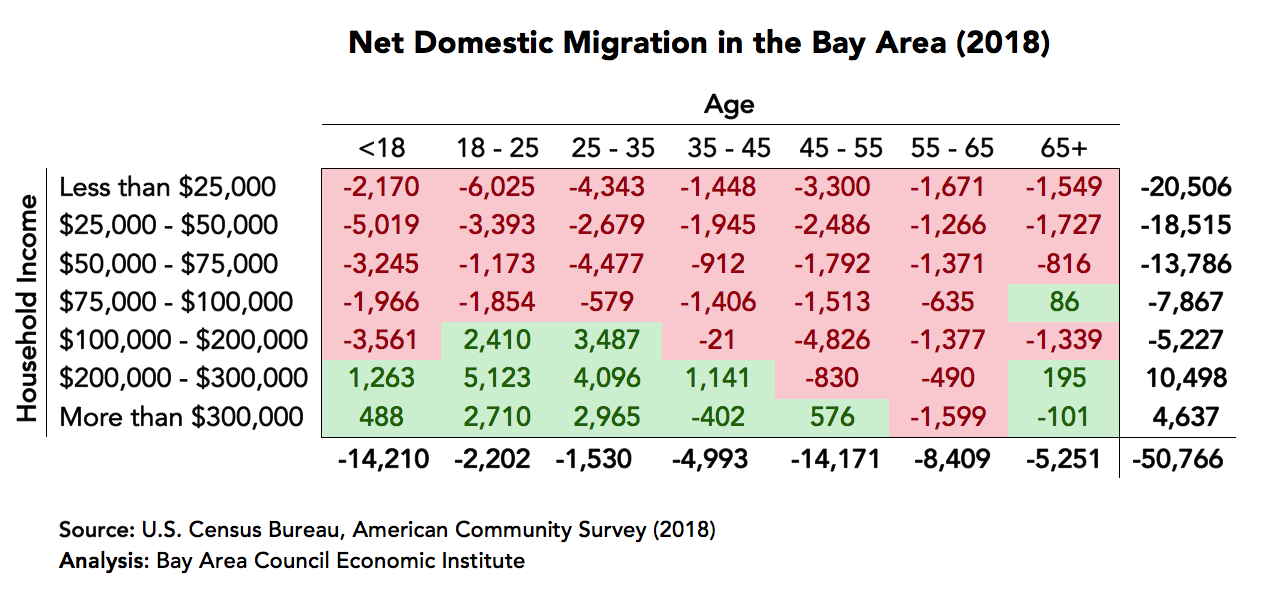
According to newly released American Community Survey data, the nine-county Bay Area experienced a negative net domestic migration of 50,766 residents in 2018. This includes individuals relocating to and from all states across the U.S., and the surrounding 49 counties in California. The data shows a clear economic divide in the types of households moving in versus those that are moving out. The median household income for residents leaving the Bay Area was $73,000, whereas the median household income for residents who moved to the Bay Area was $105,000. Residents earning a total household income less than $25,000 annually experienced the largest negative net domestic migration with 20,506 residents moving out of the Bay Area. On the other end of the spectrum, residents earning a total household income greater than $200,000 annually experienced the only positive net migration.
These numbers simultaneously reflect the region’s housing crisis and its strong job market that continues to attract high-income households to the region. The combination of low-wage workers leaving, and high-skilled, highly compensated talent relocating to the nine-county region has contributed to the income inequality present within the region today.
The largest net inflows are younger than age 35 with household incomes over $200,000. It is important to note, however, that only 21% of these new residents to the Bay Area—ages 18-35, with a total household income greater than $200,000—were the head of their households.